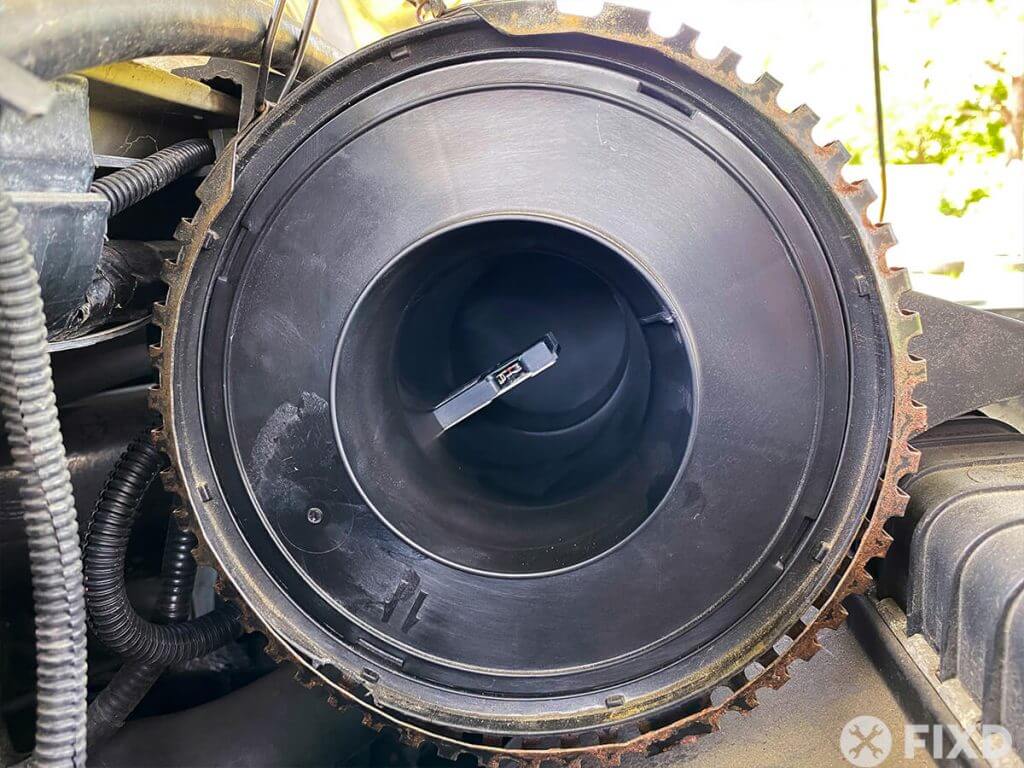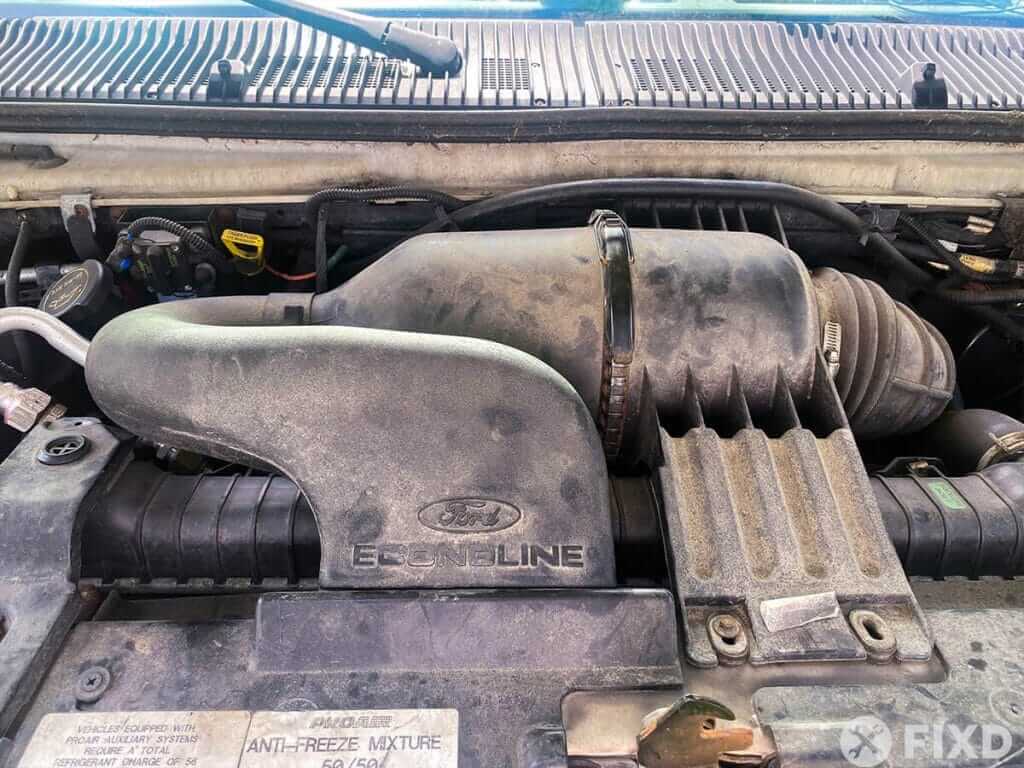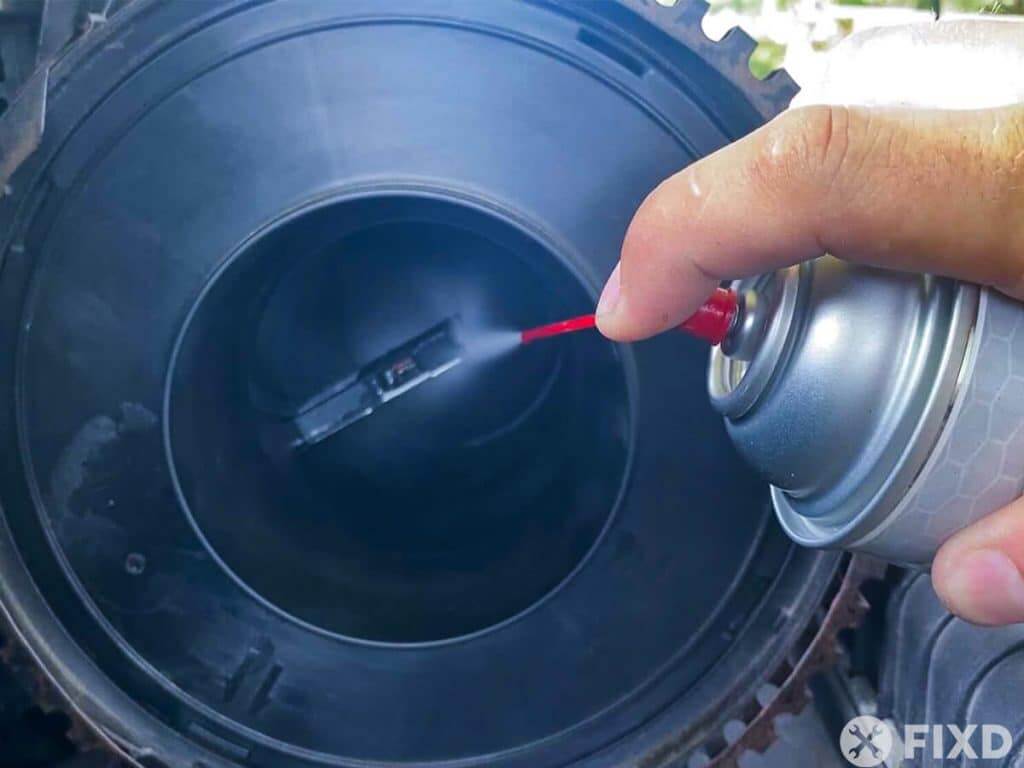Cleaned Maf Now Can Runs Funny
- DIY Difficulty Level: Beginner to Intermediate, depending on how easy or difficult it is to reach and remove the mass air flow sensor on your particular vehicle.
- Time Required: 5-90 minutes, depending on how easy or difficult it is to reach and remove the mass air flow sensor on your particular vehicle.
- Tools & Materials:
- Air intake cleaner
- Screwdrivers, wrenches, and whatever else is needed to access the mass air flow sensor on your particular vehicle
What Is the Mass Air Flow Sensor and What Does It Do?

The mass air flow sensor (MAF) enables the ECU (the computer that runs the engine) to calculate and add the proper amount of fuel to enable the engine to run at peak power and efficiency. Sometimes this sensor can get clogged with debris or fail entirely. This gives the ECU inaccurate information and causes an incorrect air and fuel mixture.
If you don't feel comfortable cleaning the mass air flow sensor yourself, don't worry! Here's how much it will cost to have a professional replace it.
Where Is the MAF Sensor?
The exact location varies from one vehicle to another, but it's generally somewhere in your air intake system between the air filter and the intake manifold. Look for a sensor sticking into the middle of the intake tubing, often near the air filter for easy access.
See Step 1 below for an image of where the MAF sensor is located.
How Do You Test the Mass Air Flow Sensor?
Thanks to OBD2, the ECU is constantly checking data from the MAF sensor and other sensors in your engine to make sure everything is working properly.
If your check engine light is on and you suspect the mass air flow sensor is the cause, you can test this with an OBD2 scan tool like the FIXD scanner and app.
Plug your scan tool into your car's OBD2 port, go to View Live Data, and check the MAF sensor readings. You should see a number that corresponds to how much air is going into the engine. When the car is warmed up and idling with the air conditioner off, this should be a fairly small number. It should change slightly but stay close to the same value.
Press the gas pedal to rev the engine. The number should increase dramatically, since a lot more air is suddenly rushing into the engine. You can also hold the engine at certain RPMs to check the MAF sensor value there. For example, at 2,000 RPM the value should be higher than at idle, but lower than at 4,000 RPM.
If what you observe in the live data does not match this behavior, it almost certainly means your mass air flow sensor is dirty or has failed entirely. There is no way to reset it, but you can try to clean it, and then replace it if a cleaning doesn't fix the problem.
Is It Safe to Drive with a Bad Mass Air Flow Sensor?
In the short term, you should be fine. If you continue to drive while this problem gets worse, though, it could cause your engine to misfire. Ignoring a misfire could result in ignition failure, catalytic converter damage, and unsafe or dangerous conditions while operating the vehicle. Cleaning or replacing the mass air flow sensor sooner rather than later will avoid these potentially more serious and expensive problems.
A mechanic will typically replace the mass air flow sensor regardless of whether it's dirty or has failed completely. It's the same amount of work either way. If they clean it, put your intake system back together, and it doesn't fix the problem, they have to do the same job all over again, so it's actually cheaper for a mechanic to replace the sensor the first time. That will cost roughly $317 to $330.
If you're comfortable taking apart your air intake system yourself, it's definitely worth trying to clean the mass air flow sensor before you replace it. All you need is time, maybe a few basic tools (my Ford van required no tools at all), and a $3 can of air intake cleaner.
*These prices are based on national averages. Related repairs or maintenance may also be needed.
When to Clean or Replace the Mass Air Flow Sensor
The MAF sensor is not an item that appears on your maintenance schedule, but like any sensor, they can occasionally fail. The best preventive maintenance you can do is to replace your engine air filter frequently according to your manufacturer recommended maintenance schedule. That way, the air going through your MAF sensor and into your engine will be free of dirt and debris that can clog it or cause it to fail.
*For a custom maintenance schedule based on your make, model, and mileage, download the free FIXD app.
What Are Common Symptoms Indicating You Need to Clean the MAF Sensor?
If you experience any of these symptoms, it's possible a dirty or bad MAF sensor may be the cause:
- Hesitation (when you press the gas pedal, the car pauses before accelerating)
- Misfires
- Loss of power
- Check engine light
- Codes P0171 and/or P0174
Keep in Mind
Since you will already be taking your air intake system apart, take a look at your engine air filter whether it's time to replace it or not. If it's dirty, replace the air filter now. If you've driven through particularly dirty or dusty conditions, the filter may get dirty earlier than expected.
Now is also a good time to clean your throttle body. It can get dirty the same way as the MAF sensor, and you use the same solvent to clean both, so it should only take a few minutes while you're already in there.
How It's Done
Step 1: Find your air intake system.

Every vehicle is different, so look online or in your repair manual to identify your air intake system. My Ford E250's intake is conveniently located directly under the hood. (Yes, it's dirty.)
Step 2: Take apart your air intake system and find the MAF sensor.

The intake consists of a series of tubes, usually plastic, but sometimes metal. Remove your engine air filter, then locate the MAF sensor somewhere between the filter and the engine. In my Ford van, the mass air flow sensor sits right behind the air filter, and is easy to reach once the filter is removed.
This is also a great opportunity to examine your air filter to see if it needs replacement. In my situation, it did.
Step 3: Clean the MAF sensor.

Start the engine. Normally you don't want to run the engine without an air filter, but for this job it's ok to do it for a short time. Grab your can of intake cleaner (I used CRC Mass Air Flow Sensor Cleaner), and spray it at the MAF sensor. The engine will slow down and almost stall while you do this. This is normal. A second or so after each spray, the engine should run normally again. Use several brief squirts, rather than one long one, to make sure the engine keeps breathing and running. Spray as many parts of the sensor as you can reach.
Don't worry about spraying this particular liquid into your engine. It's designed specifically for this job. While you don't normally want to spray liquid into your engine, this cleaner will burn up harmlessly along with the gas, which is why you want to run the engine while spraying it.
You may get additional OBD2 codes while you do this. When I cleaned my MAF sensor, I triggered a P2197 code. Normally this means that the engine is getting too much air for the amount of fuel it can provide the engine. Since it happened while I was cleaning the sensor, I knew that wasn't the true cause, and that it was safe to ignore just this once.
Step 4: Reassemble your air intake system.
Now that you've cleaned the sensor, you can reinstall your air filter and anything else you had to remove to reach it. Now is also a good time to install a new air filter if your old one was dirty, like mine was. Put everything back together the way you found it.
Step 5: Use the FIXD scanner and app to clear your engine codes.
To find out if this has solved your problem, clear your codes and keep on driving. If a simple cleaning has fixed the sensor, your engine should run smoothly and the check engine light should remain off and your problem is solved. Just after doing this job myself, I did an 80-mile trip of mixed city and highway driving. The check engine light did not return.
If the symptoms described above return or remain, it's time to replace the MAF sensor. The good news is that since you just cleaned it, you already know how to find your MAF sensor under the hood. You should be able to replace it yourself instead of having a mechanic do it for you.
Claim Your Custom Maintenance Schedule
Get the FIXD Sensor and free app today for a custom maintenance schedule based on your make, model, and mileage. Never miss important maintenance again with automated maintenance alerts! Learn more at fixd.com.
Source: https://www.fixdapp.com/blog/how-to-clean-your-mass-air-flow-sensor/
0 Response to "Cleaned Maf Now Can Runs Funny"
Post a Comment